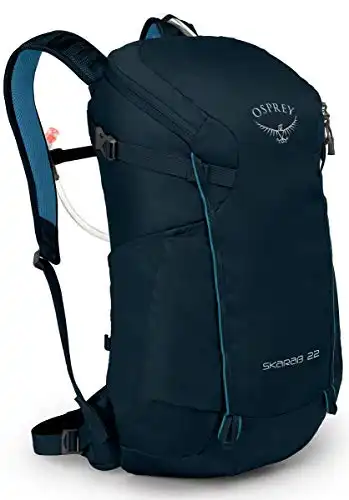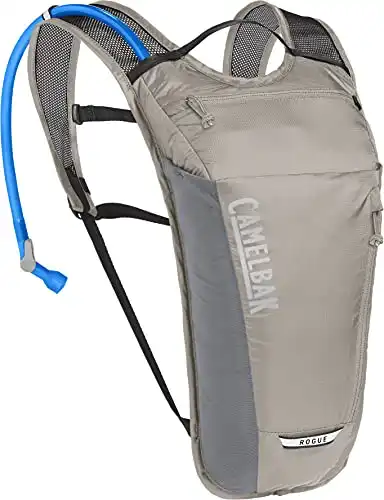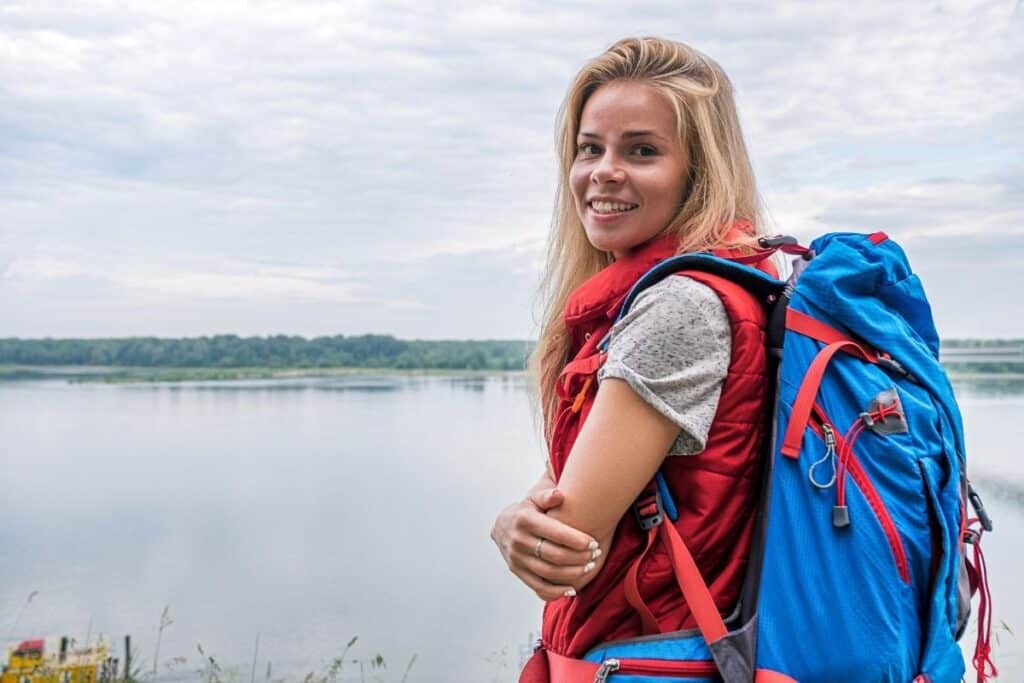
If you are new to hiking, you will likely have multiple questions you have never thought of before. Among these questions, you may ask yourself, “what color backpack should I get for hiking?”
While there is a lot of common sense that goes into hiking, there are also key factors that a lot of people don’t realize until later. One of those factors is the color of your backpack.
The best backpack color can depend on a few things – including personal preferences. Before you finalize your backpack choice, you will want to consider color options that backpack model offers as well!
The best hiking backpack color depends on whether your goal is to blend in with the environment or stand out. Black is viewed as the least desirable backpack color because it absorbs more heat from the sun and is easily lost in a variety of environments.
There are a few different colors that you can choose from, and each has its pros and cons. But before you can pick a color, you will have to understand the role that color plays in camping equipment.
|
The Skarab comes in 18 and 22-liter options and includes a 2.5-liter water reservoir. Its simple low-profile design is functional but still comes with plenty of gear compartments and features. |
CamelBak takes the cake when it comes to lightweight designs! At just under one pound, it doesn't add any unnecessary weight while still allowing you to tote around a few key essentials and 70 ounces of water. |
The Skarab comes in 18 and 22-liter options and includes a 2.5-liter water reservoir. Its simple low-profile design is functional but still comes with plenty of gear compartments and features.
CamelBak takes the cake when it comes to lightweight designs! At just under one pound, it doesn't add any unnecessary weight while still allowing you to tote around a few key essentials and 70 ounces of water.

Why Does Color Matter?
When it comes to picking out hiking equipment, color matters more than you may initially think.
However, the color that you find to be best for you may not work for others. Where you choose to hike and for how long you plan on hiking can impact the color you should buy and why you should buy it.
Reason #1 – Blending In
If you are someone who plans on hiking in heavily wooded areas and would like to be left alone, you will want to find colors that will help you blend in.
Backpacks can take up a lot of visual space when on foot, so if you want to blend into your surroundings, your backpack must match the rest of your equipment.
Reason #2 – Standing Out
On the opposite side, there are usually situations in which you will want to stand out. If you are concerned about being found easily in wooded or crowded areas, you will want your backpack to help you stand out.
Having your backpack stand out can also help you find your backpack easier if you happen to misplace or lose it during your hike.

What is the Best Color for a Backpack?
In general, you will want your backpack to match the rest of your outdoor equipment.
Oftentimes, people will choose a shade of gray for their backpack. Gray is a color that usually goes well with any other color scheme. If the rest of your gear’s colors are bright, a dark shade of gray will work well.
If your gear’s color has more neutral or muted colors, a light shade of gray may be more appropriate.
However, you might find that you do not like gray or want a backpack with a specific color. Remember the following information in mind when choosing a backpack for your hiking and camping adventures.
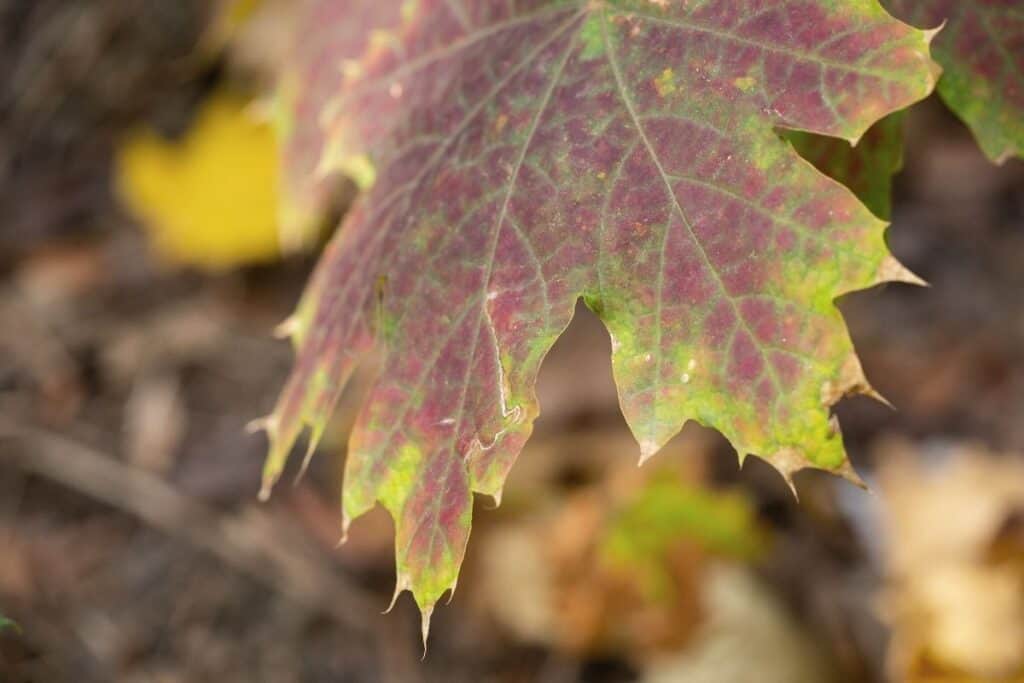
Dark or Muted Colors
Darker and less noticeable colors are best for situations in which you want to blend in.
Blending in while hiking or camping can be useful when you want to be left alone, whether you are trying to escape society for a bit or don’t feel like talking to another random camper.
Likewise, blending in also prevents you from disturbing other campers that may be in the area.
In terrain with many trees and vegetation, you will want your backpack and gear to be cool tones of greens and browns. These neutral shades will help blend into your surroundings easier than black or yellow equipment would.
In desert terrain, neutral or cool tones of oranges and reds would be more appropriate for blending into the surrounding area. Knowing the general color scheme of the area you plan to hike or camp in can help you pick the best colors.
Besides blending into the terrain, wearing muted colors also helps prevent insects or animals’ attention that you don’t want bothering you. A bear is more likely to be curious about a bright yellow tent than a neutral green one.
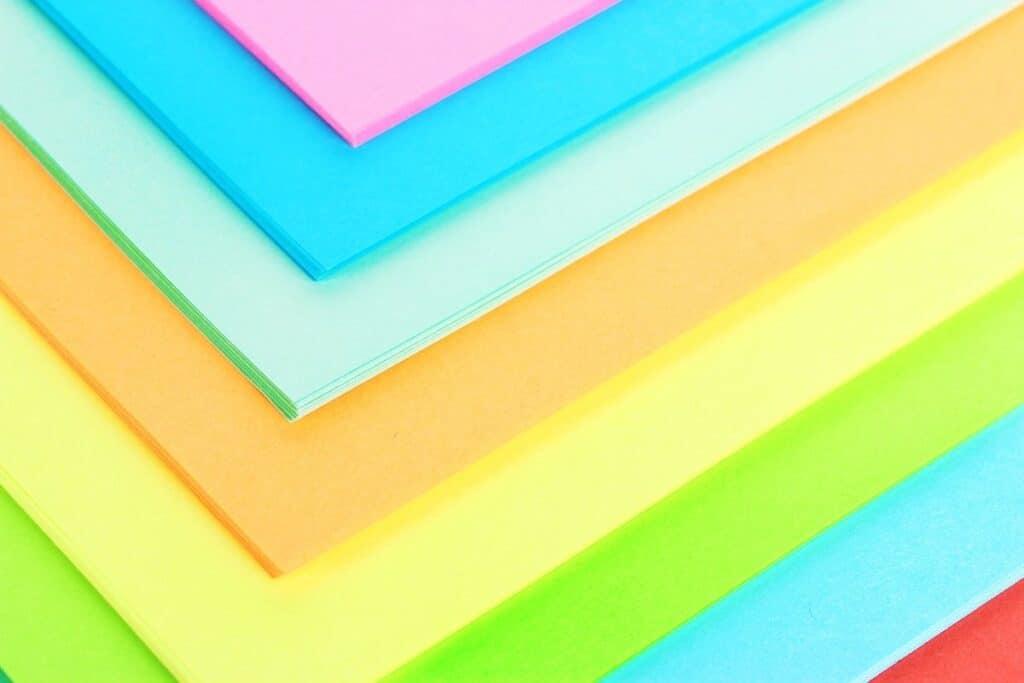
Bright Colors
For safety reasons, some people would much rather stick out when hiking or camping than blend in.
While blending into the scenery can be beneficial, it can also pose some safety risks. In the event that you misplace any gear, you will most likely have a tough time finding it if your gear blends into the ground.
However, the biggest safety issue that people are concerned with is getting lost!
If you were to get lost, the last thing you would want is for people to have a hard time finding you. To prevent this, people will often choose bright colors for their equipment.
It’s important to consider your terrain of choice in this situation as well. A bright green backpack in a forest might not have the same effect as it would in the desert. It’s not enough for the backpack to be bright; it has to stand out from your surroundings as well.
In this situation, it would be a good idea to pick colors that are on the opposite color spectrum than your surrounding area. Bright orange typically works best in heavily wooded areas. This is the reason that hunters often wear bright orange vests or equipment.
Neon colors are a good option for a backpack, as they tend to stick out a bit regardless of your location.
Best Colors for Outdoor Gear
Similar to your backpack, the best colors for your outdoor gear depend on if you want to be hidden away or not.
Another factor to consider is the terrain that you are hiking in. A heavily wooded area will call for different colors than a desert terrain would.
All in all, the same rules for a backpack apply to the rest of your outdoor gear rules. If you choose to blend into your environment, you may want to find at least one item that is brightly colored to keep track of your belongings.
What Colors Should You Not Wear Hiking?
While most other colors are up for debate, most hikers agree that black is a color to be avoided.
Not only does black not blend into any terrain, but wearing black can cause safety issues at nightfall. Whether you are blending in or standing out, you should be appropriately dressed if you are hiking at night. Wearing black during the night can make you hard to see.
Not only will you be hard to see during the night, but you will have a harder time finding anything that has been misplaced throughout the night.
However, wearing black during the day can also come with safety risks.
Black clothing and materials tend to soak up heat from the sun more than other colored materials. Because of this, you are exposed to the risk of getting overheated.
Any food or liquids stored in a black backpack are also at risk of getting too warm and melting or losing their safe temperature. Eating certain foods at the wrong temperature can be unappealing and unsafe.
Whether you are wearing a black or orange backpack, remember to keep safety gear and equipment with you at all times while hiking.
Final Verdict
Overall, the best color for your backpack depends on the location you are hiking and how you want to approach hiking.
While many people like to hike while being undisturbed by bright colors, you need to put your safety first. If you are concerned about losing your backpack, or your equipment in general, you will most likely want to select a lighter color.
A light gray is a safe choice, as it is not too colorful but should be bright enough to spot in most settings.
Additionally – most backpacks come in a wide variety of colors so you’ll have many options to meet your needs!
Related Articles
If you found this article helpful, then make sure to also take a look at my other related articles!

